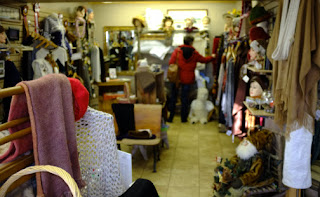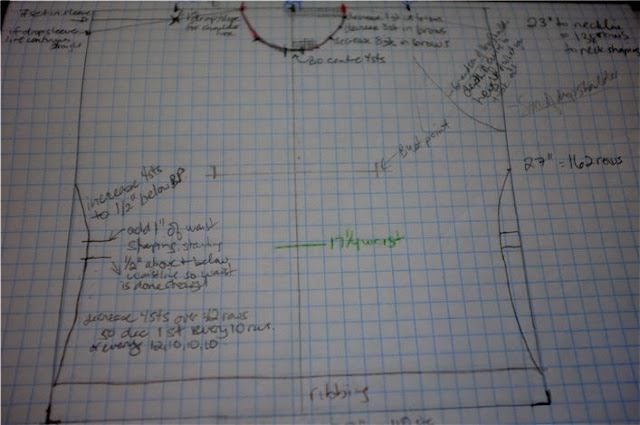If you're not new to sock knitting, you can go grab a cup of your favorite beverage and go do some knitting - you probably know all this. Or hang around and keep me honest. Jump in if I've forgotten anything.
If you're new to sock knitting, grab a cup of your favorite beverage and read on. These are the basics about sock knitting.
We'll talk about 3 things:
1. The parts of a sock
2. The direction of knitting
3. Adjusting sock sizes
Parts of a Sock
 |
| Swirl Socks pattern. |
Cuff - This part of the sock is usually done in some kind of ribbed pattern, which provides the stretch and cling to help keep your socks from falling down. Common ribbing used on the cuff is 2x2 ribbing or a 1x1 twisted rib (where the knit stitch is knit through the back of the loop). The cuff is usually 1-2" long, although it looks shorter when stretched on your leg.
Leg - Well, it's the part that covers your leg. This is where the pattern usually begins. I say usually, because sometimes you might want to just continue the ribbing all the way down the foot for a nice stretchy and simple sock. Yes, technically ribbing is a pattern too. The point is - this is where you can be creative.
Heel flap - This part is not knit in the round. It's knit back and forth, creating a small rectangle that covers the heel of your foot. Some knitters reinforce the heel flap with nylon reinforcing thread to help prevent the heel from wearing out, but it's not mandatory to do this.
Heel/Heel turn - "Turning the heel" creates the part that cradles the sides and bottom of your heel - transitioning from knitting the leg to knitting the foot of the sock. The heel turn is usually done with short rows.
Gusset - The gusset is a triangular piece knit on each side of the sock that connects the the leg of the sock to the heel of the sock. The gusset is created by picking up stitches along the heel flap and starts forming the shape of the foot of the sock.
Instep - Divided into the top of the foot and the sole of the foot. The pattern of the sock continues along the top of the instep and the sole is usually done in stocking stitch.
Toe - There's an infinite variety of ways to knit the toe of the foot. And opinions vary as to how wide the actual end of the toe should be - some prefer a narrow toe, others a wider one. The toe stitches are grafted (sewn) together using the Kitchener stitch.
Direction of Knitting
Socks can be knit either cuff down or toe up. You'll find knitters who strongly prefer one method over another as well as those who don't mind doing either. It's a matter of personal preference. For me, I prefer cuff down, simply because I have memorized a basic formula for doing the heel flap, heel and gusset stitches. I'm not as proficient (yet) with toe-up socks.Top/Cuff Down - With this method, you start at the cuff and work your way down to the toe. The challenge with this method, is that you must 'guess' how much yarn will be required for each sock. What I usually do is weigh my sock yarn before I start knitting. Then I allocate 25% for each sock leg and 25% for each foot. Using this method, I've always had yarn left over when knitting for my size 8.5 (US, Ladies) foot.
Toe Up - With this method, you start at the toe and work your way up past the heel to the cuff of the sock. The heel turn and heel methods used for toe-up socks vary from the top-down method. The benefit of knitting toe up socks is that you can split your ball of sock yarn in half (by weight) and use up every last bit of yarn, no guessing required.
Sizes
There are a few ways to create different sizes of socks. If you're lucky, the pattern you're following will have instructions for different sizes, making it easy for you. But it's good to know a few ways to adjust the size yourself, if need be.Different needle sizes - This is the easiest way to increase or decrease the width of your sock, by going up or down one or more needle sizes. Most frequently, this method is used on the sock cuff - going up a needle size to produce a wider cuff around the calf. Using this method, you don't have to change the pattern instructions. Just be sure that you're satisfied with the fabric you're creating with the different gauge. If you go up to too large a needle size, the fabric might be too 'loose' and airy for the pattern.
Changing the number of stitches - The most obvious way to change the width of your sock. However, if you're following a pattern that doesn't easily allow for adding in extra stitches, you might not be able to use this method. (Blatent plug: The two sock patterns I've released both make it easy to add in extra stitches along the back of the sock to adjust the width if necessary. Swirl socks and Trellis and Coin socks, if you're interested.)
Adding repeats - This method mainly allows you to change the length of the sock (foot or leg) by adding or reducing the number of repeats in the pattern. Just make sure you have enough sock yarn to accommodate any extra repeats.
This covers the very introductory basics about hand-knit socks without requiring you to go get a second cup of coffee (or whatever you were drinking). There's lots more to discuss about sock yarn choices, patterns, and so forth. But we'll keep this in easily digestible chunks, shall we?
Did I answer all the basics? Did I miss something? Have a comment? Feel free to let me know.



























